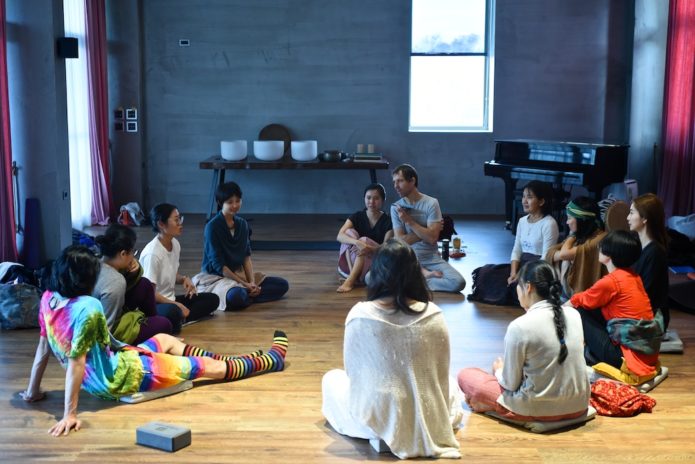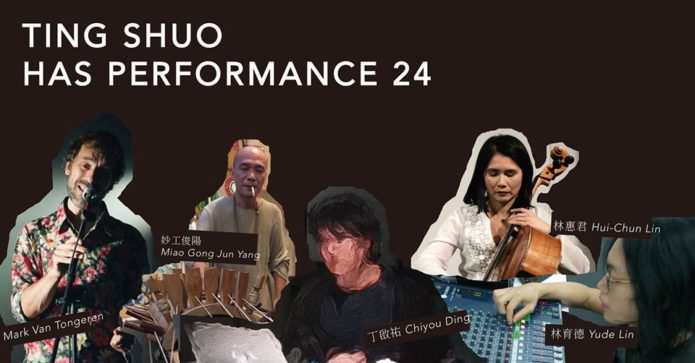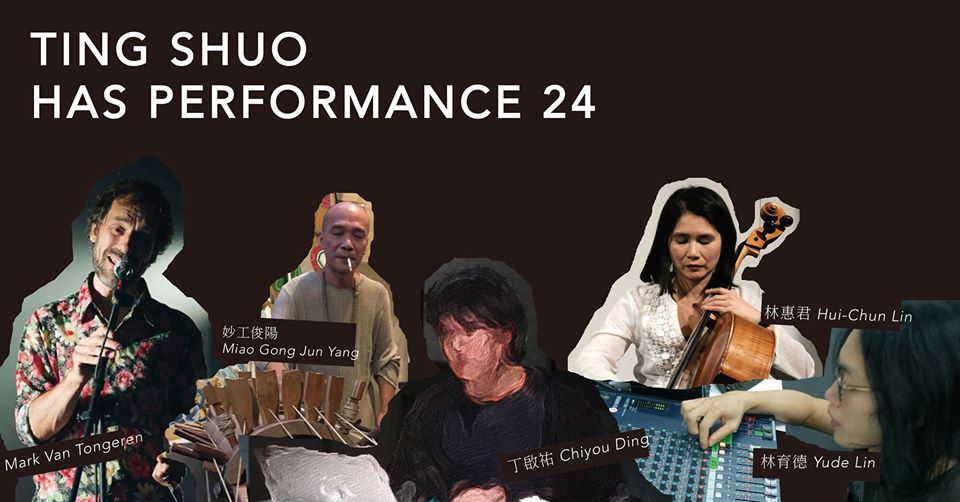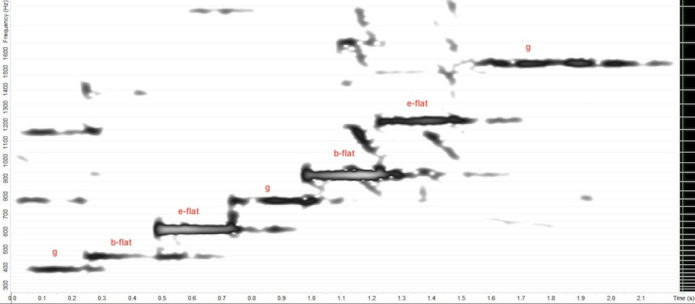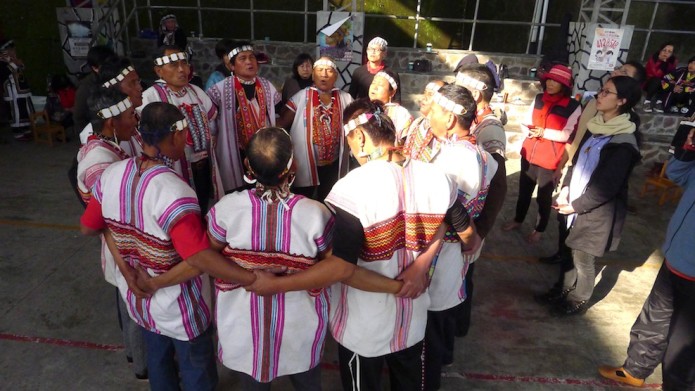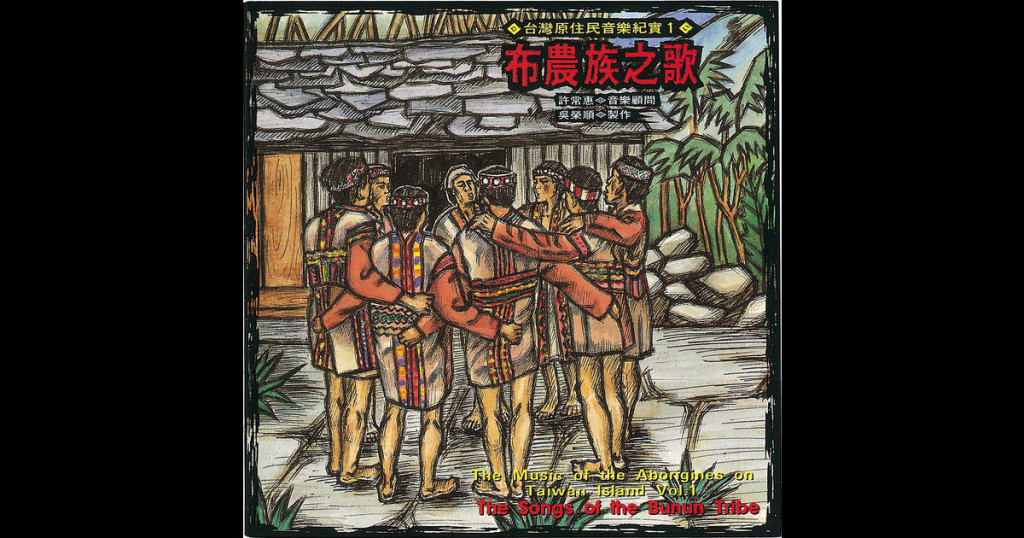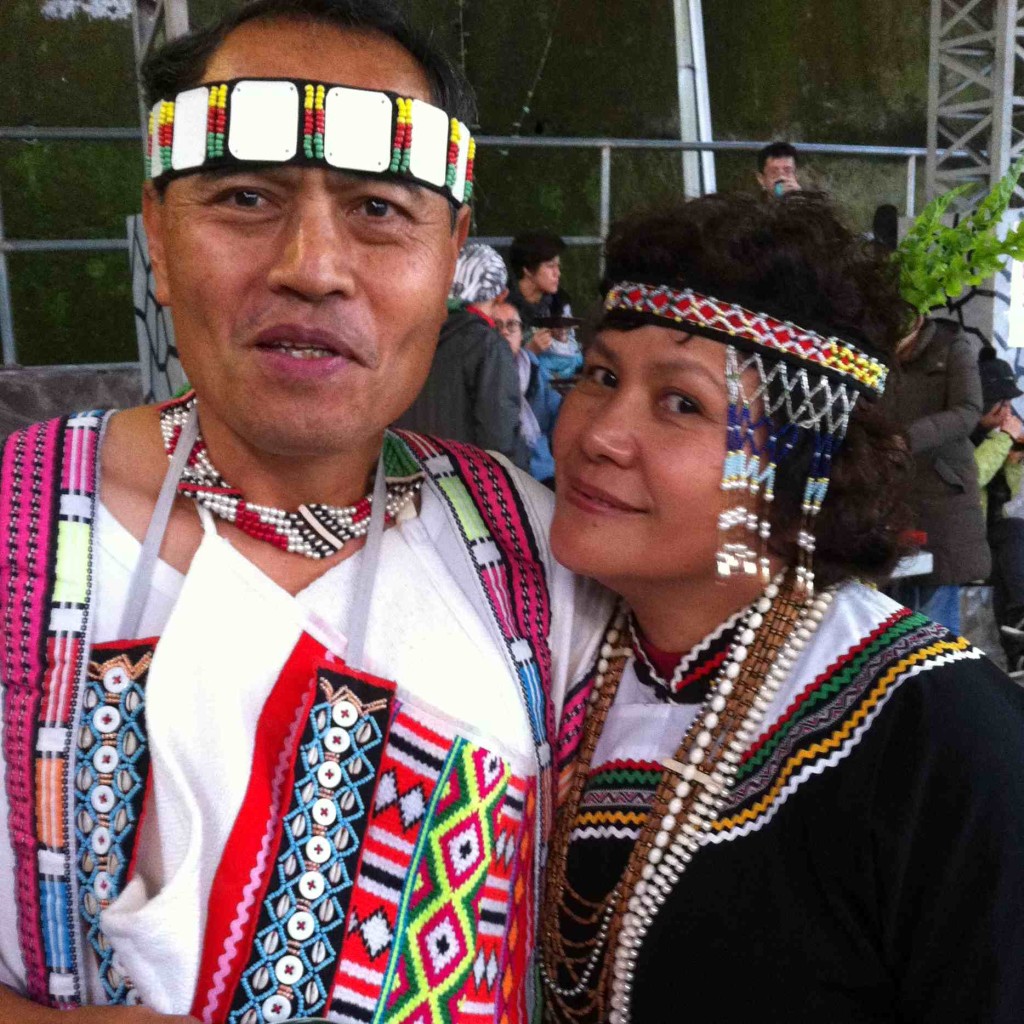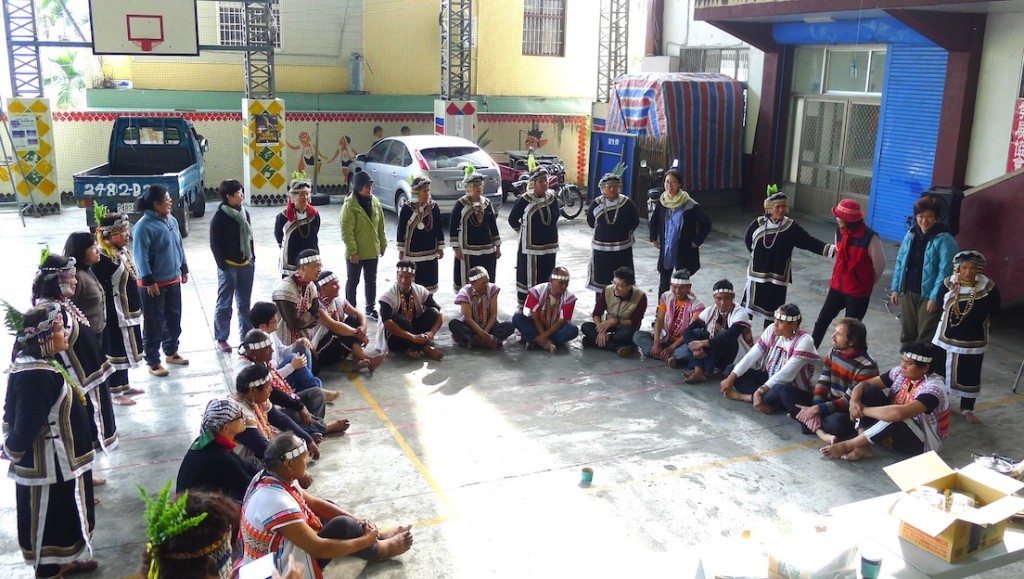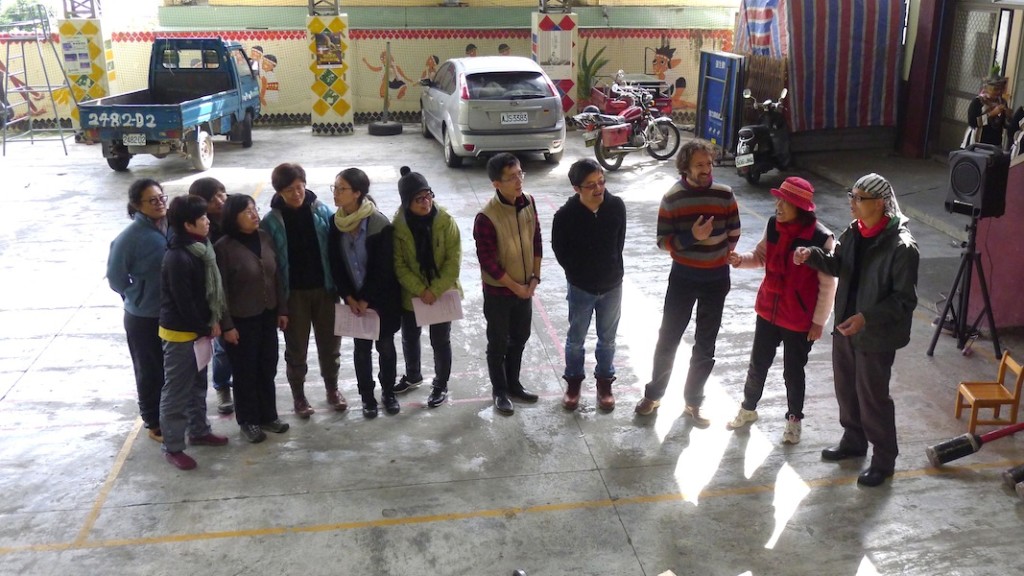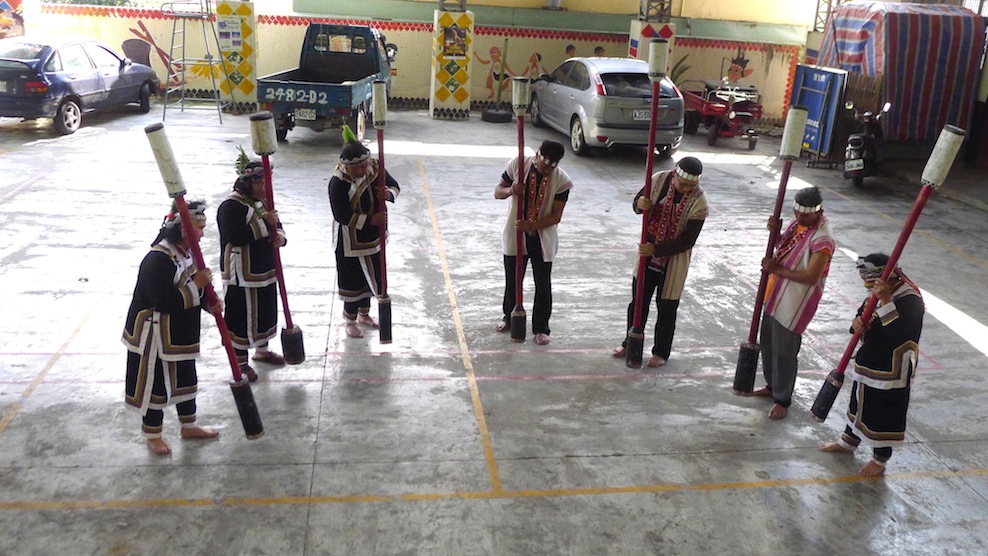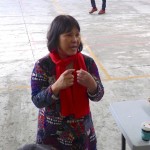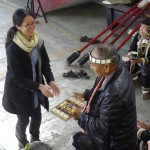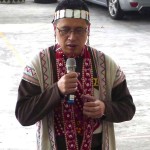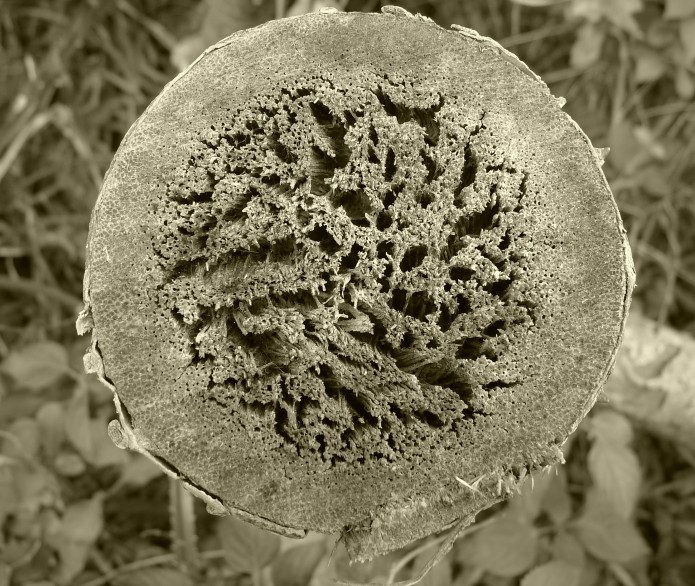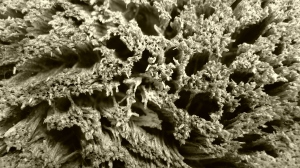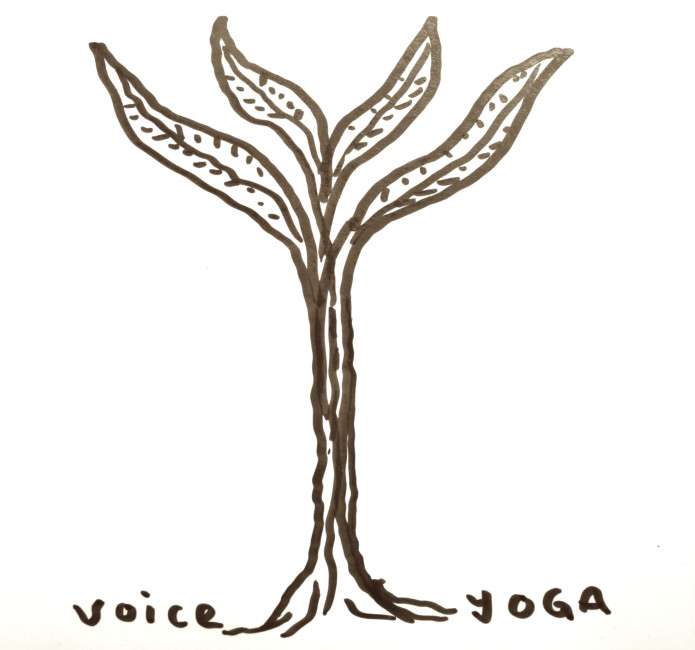At the end of 2019, in fact around the Winter Solstice on December 21, we did the first Voice Yoga Retreat here in Taiwan. A wonderful recollection of the best stuff I have done during my 7 seven years of weekly Voice Yoga classes. It was beyond expectation: fantastic weather, great location, wonderful students, and a great three-person-strong core team (Sunny Chen, Jackal Mei, me) to take care of everything.
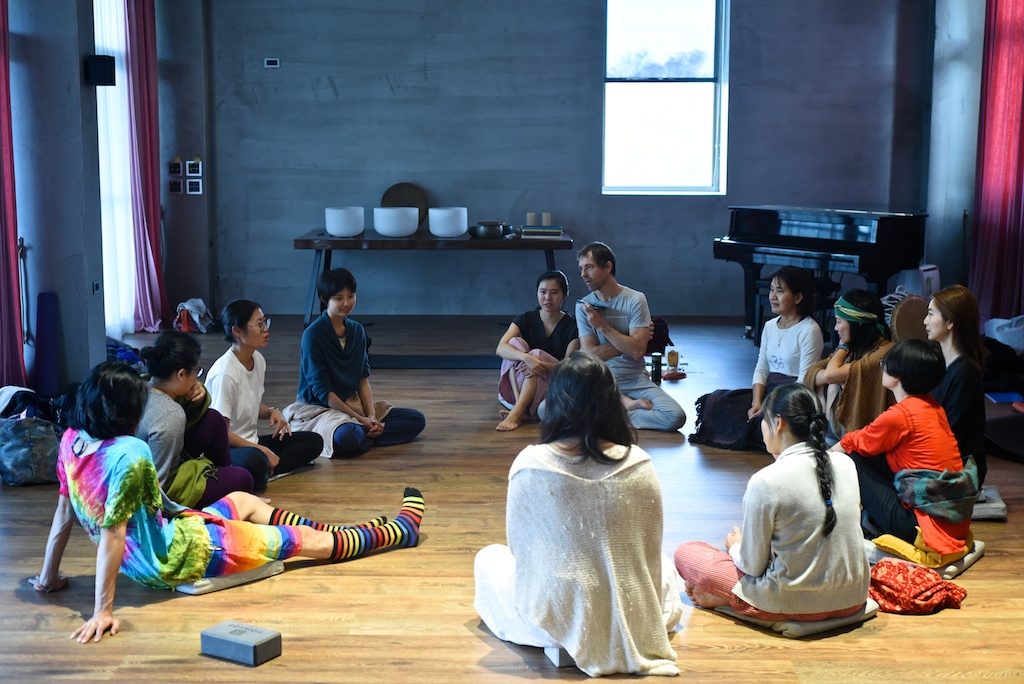
Most of all, we all experienced a nice flow between yogic and other exercises, sound and body improvisations, eating cakes and drinking Jackal’s homebrewn coffee, meditating, listening, chanting, learning about my methods and ‘vision.’ People came from all over the place and all walks of life, and most were new to Voice Yoga.
One student, Guang Guang, wrote an excellent report in Chinese about everything we did, in Chinese. I reproduce it here, with an autotranslation at the bottom of this page. Jackal Mei made some great photos, and there’s a couple of myself too. Many thanks to Guang Guang and Jackal for the words and images, and to Sunny !
We’ll do another Voice Yoga Retreat later this year on the beautiful, relaxed East Coast of Taiwan, where the pace is slow, weather seems to be nearly always good, birds sing loudly and the ocean is never far away. Get on the maillinglist for updates.

/聲音瑜伽
因為身旁總是很多優秀的朋友,然後串成一條路徑,一開始是葉子跟我分享聲音,讓我在心裡種下了種子…
於是最近去體驗了一場聲音瑜伽,
授課的老師是教授泛音的馬克
我很喜歡他無私有愛的分享
且關照及感受著每一個我們
當第一堂課說
在這所發出的聲音都是當下要發生的
沒有好壞對錯,每個音都是對的…
讓沒有音感的我感到自在安心
第一個晚上
馬克很自然的就將大家的聲音一起融合在空間裡,讓彼此陌生的夥伴,很快的流動起來,只是短短的兩小時,我全身的細胞都在跳舞
/呼吸練習
在這個練習裡有很多要去感覺的東西,
我也在這個練習去練習感覺
呼吸的快慢,流向哪裡,擴張或收縮…
從沒思考這麼自然發生的事,
但最近這兩次的課程都在提醒著這件事,也就是當下

/母音三角形
很喜歡玩母音三角形
但在這裡面會發現自己的氣很短,
也會想配合其他人
在完美與協調之間理出自己的節奏
呼~吸~
烏~啊~一
/聲音的海洋
隨著模仿到自然而然的發聲,
讓自己的聲音丟進海洋裡
腦海會一直出現森林,池塘,水窪,沼澤,穹蒼,萬物,大地之聲
喜歡靜容分享的,她感覺身體自己發亮的地方想出聲,於是就讓那個聲音自己出來…
好有覺察的身體,我還在練習的路上
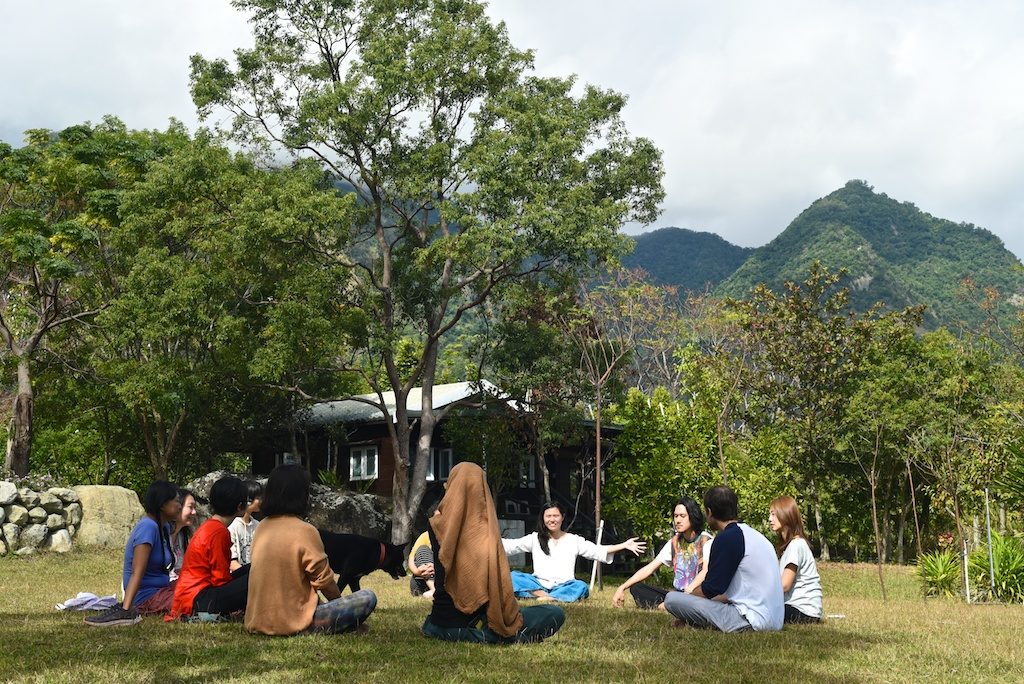
/深度聆聽
在戶外一起發聲,
聆聽空間裡擁有的音,跟隨
聆聽沒有的音,創造
在一來一往之間
做成了一首當代音樂
很喜歡這樣融合的旋律
/驚喜
圍一個圈,跟著馬克發出幾個音,
高高低低,閉上眼睛
幾個音沒有規則的發聲練習
然後由慢漸快,
馬克將桑尼推進圈內
在人圈中閉上眼享受旋律
馬克這時唱的越來越快
越來越具體
開始發現事有蹊蹺
打開眼睛望向馬克
他對我笑著示意
宛珍也早領略到了
沒錯,真的是我想的那樣
學員一個接一個笑開
桑尼終於意識到這一趴的別出心裁
流著淚接受大家獻唱
這一刻好感動
好美~好美~

/冬至熄燈
圍著蠟燭一起度過寧靜的夜,閉上眼四週充滿星星的感覺,那些包圍我們的自然之聲,好像墜落在草叢中發亮的星體,發亮的全是萬物的聲音
/薩滿儀式
同學藍師那一夜為大家進行薩滿旅程
第一次體驗儀式,薩滿鼓震出我全身電流,在守護靈的守護之下去感覺這個過程,叢林,速度,黑暗的旋轉,之後竄出來的蛇,最後讓自己慢慢抽離,見到一頭鹿而停止
宛珍被薩滿鼓招喚,以奔跑來流動
阿駱也隨之起舞,整個場域或坐或動
各有各的世界,奇幻世界~
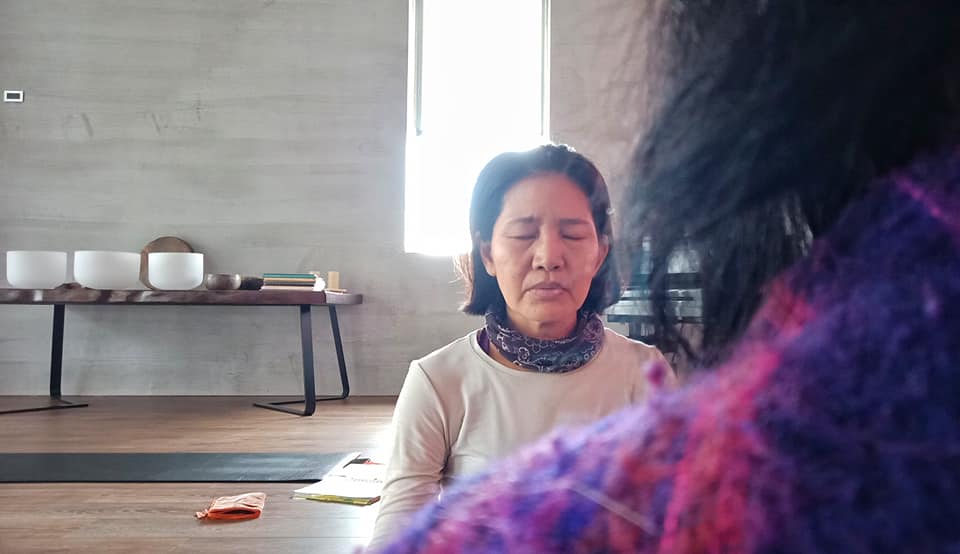
/母音九宮格
深度覺察自己的聲音所在
共振的身體裡,聲音去到了哪裡?
馬克說
身體跟聲音會有共振的地方
但
意念也可以讓聲音去你想要他要去的地方
最後每個人的聲音震動,
都有不同的發現
這讓我覺得聲音太好玩了
每個人的身體感受都如此獨特

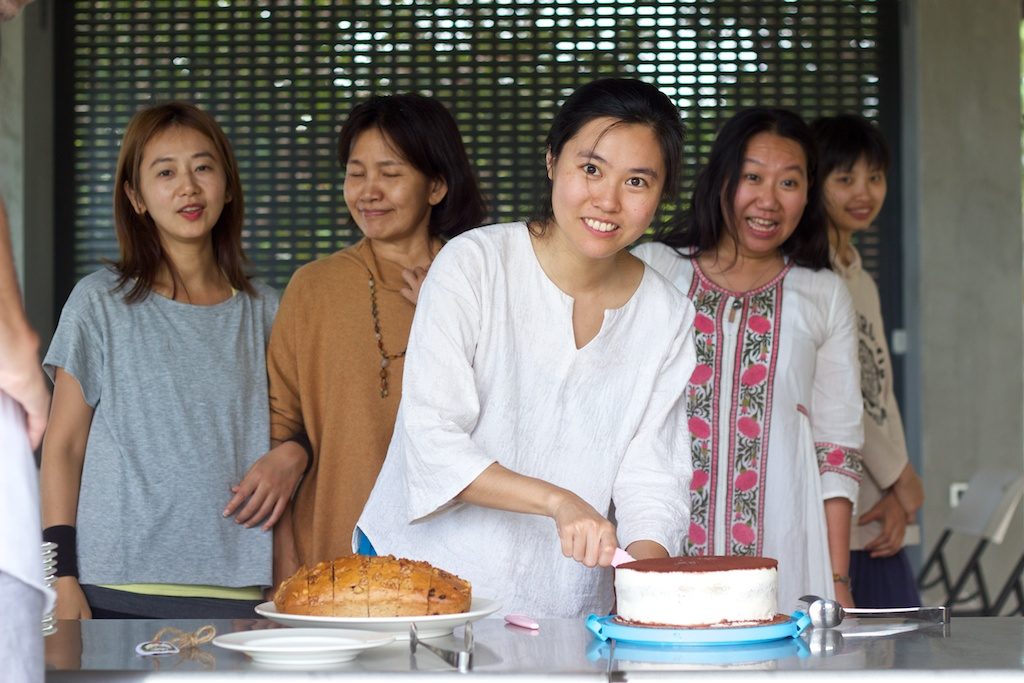
/呼吸節奏
呼吸長短的差異,
也能是一首悠揚的曲子
這個章節我也很享受
每個樂器的總和
就是一篇生命的樂章
/泛音獨唱
某個下午,馬克為大家唱歌
坐著,躺著自由
本來是陰天的午後
在一段泛音的旋律不斷繚繞時
我聽見的都是天使的聲音
此時
窗外金色陽光透進粉色的窗簾裡
天使光溫柔的灑在馬克身上發亮
那一個畫面我來不及拍照
但映在我腦海
我全身細胞都在舞蹈
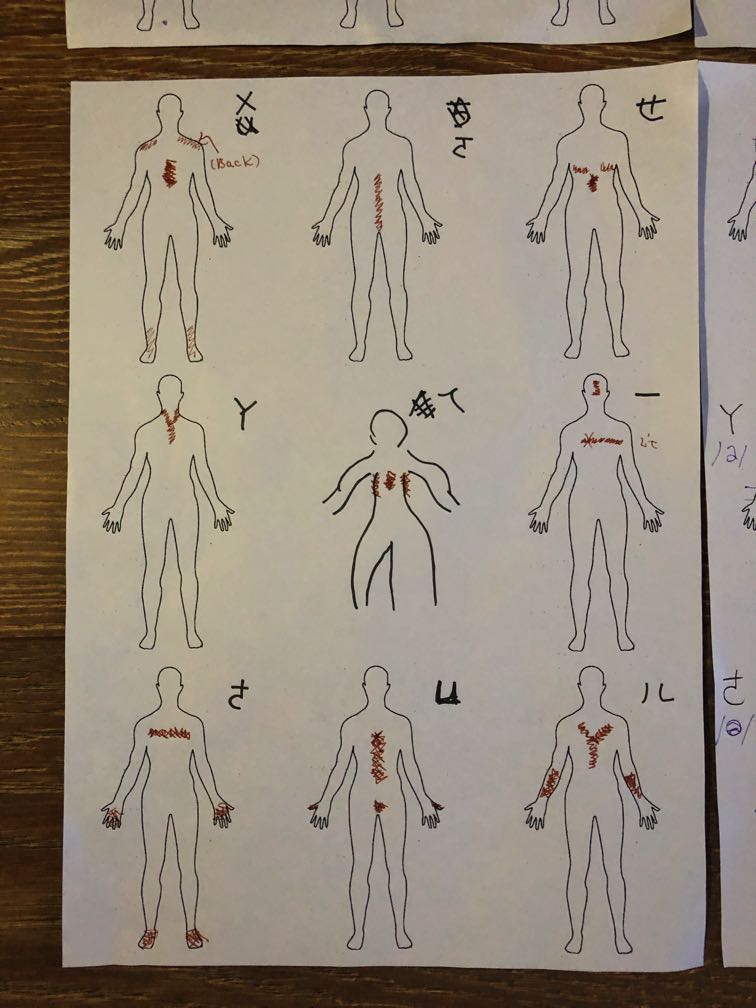
/八部合音
每個人的聲音都好獨特好聽
曙芳的聲音裡有老靈魂的歌唱
想起她的守護靈老奶奶還有愛
輪到發踢卡時
是花神在唱歌吧!!!
清晰亮麗好感動
輪到我的時候,腦袋原本想運作
後來告訴自己算了
讓聲音是什麼就是什麼
雖然知道我聲音都沒到要去的地方
我的聲音之神都在幫我找音階
去了好幾個半音
後來才去到該去的地方
我也是可以說
那是我精準的控制我的半音啦(撥瀏海~
經過三天的玩耍
很鬆很慢也很奇妙的身體各種痠
沒意料只是出聲音而已
身體就有各種拉扯
但記得馨勻說的很好
(可我忘記她具體說什麼了XD)
但她說完我就一陣恍然
拉拉也分享了馬克在機械噪音裡
找出它規律的節奏
讓噪音不只是噪音

三天收穫很多,
也許我是還在餘震之中再慢慢感受
唯一最明白自己的部份
大概就是我還沒那麼放鬆自己吧
畢竟聲音對我來說太陌生
但經過這些過程
更能丟掉小時候對聲音的既定印象
聲音的顏色如此寬廣無限
告訴自己,就是玩,去玩吧!
聲音瑜伽,是瑜伽也是即興
祂不止是聲音,
是能讓心、靈與身體的合一
謝謝Yu Chih Lin帶我池上玩
謝謝Xiaoying Ye聲音的連結
謝謝Jackal Mei意志的邀約XD
謝謝Mark Van Tongeren
帶領著經驗自己的不可思議
讓我在這場聲音之旅中如此盡興…
#課後筆記
#聲音瑜伽
#樂吉昇天
#已被圈粉
#很好玩還要再玩
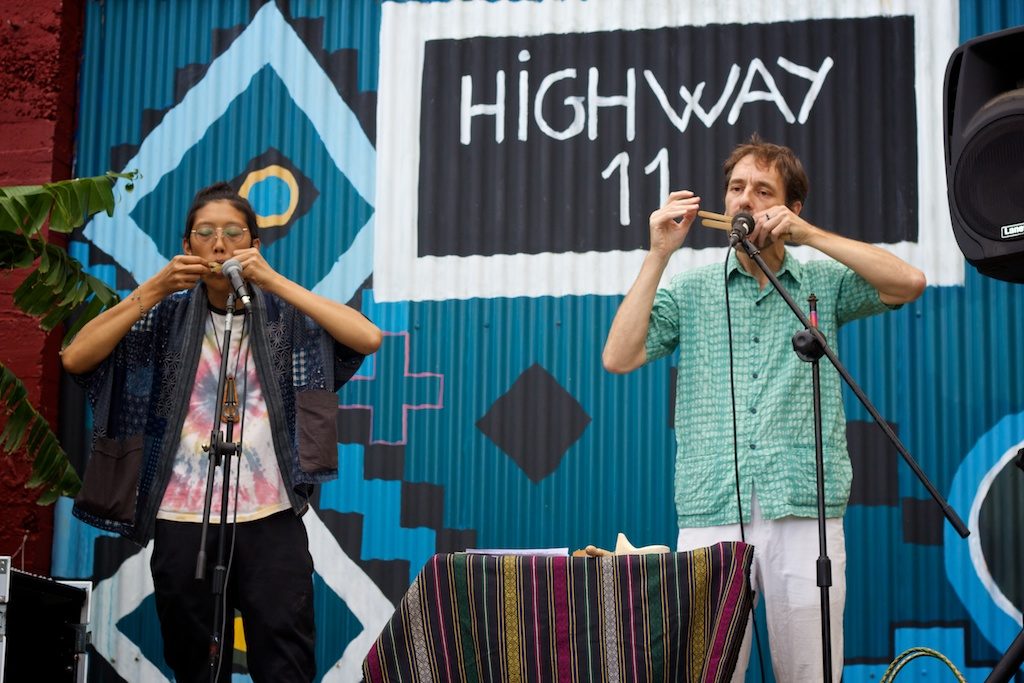
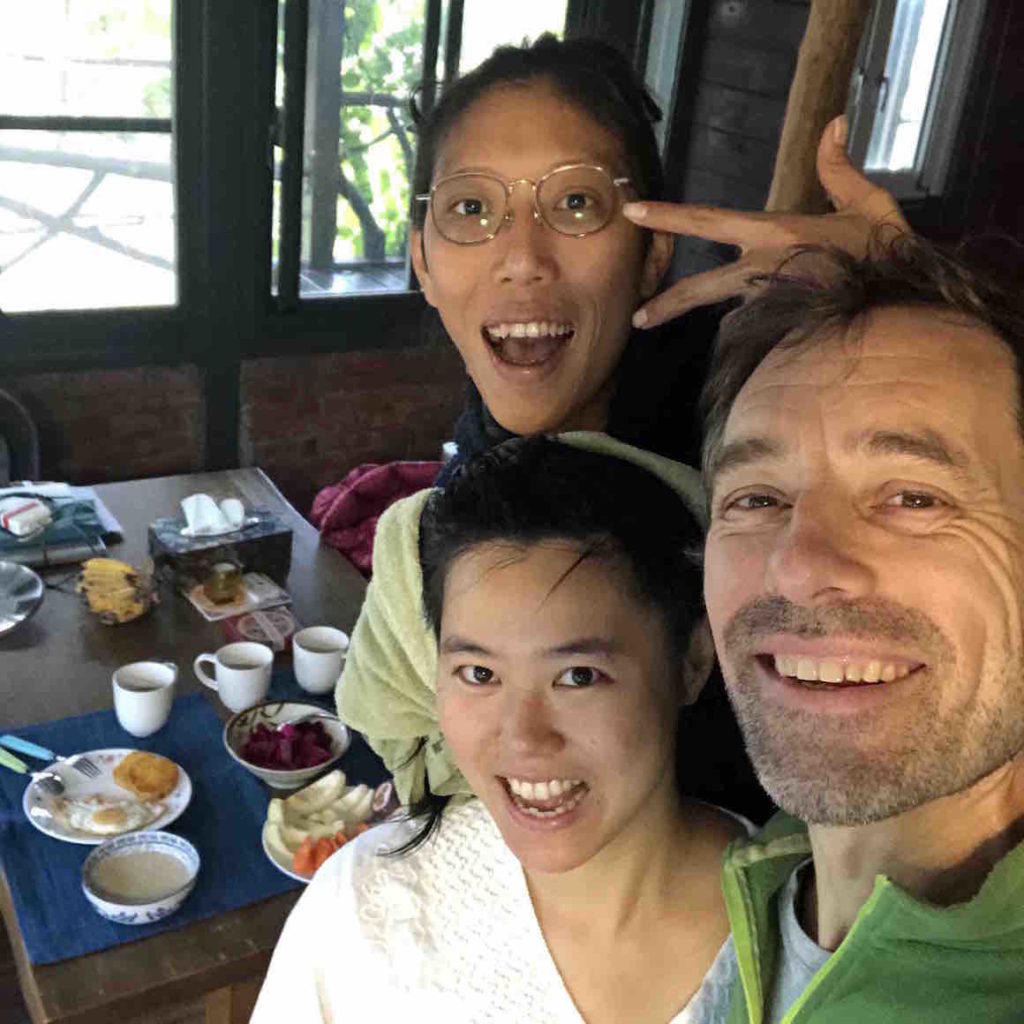
Autotranslation of the Chinese text.
/ sound yoga
Because there are always many good friends around me, then put into a path. at the beginning, the leaves share the voice with me, and let me plant seeds in my heart…
So recently, I went to experience a sound yoga,
The teacher who taught is the mark of the pan-Yin.
I love his selfless and loving sharing
And take care and feel every one of us
When the first class said
The voices made here are all about the moment.
There is no bad right or wrong, every voice is right…
Let me feel free to feel at ease
First night
Mark is very natural to mix everyone’s voices together in space, let each other’s strange partner, quickly flowing, just two hours, my whole body is dancing.
/ breathing practice
A lot of things to feel in this practice,
I am also practicing to practice the feeling
Where to breathe, where to go, expand or shrink…
Never thought about what happened so naturally,
But these two recent courses are reminding this thing, that is the moment.
/ vowel triangle
Love to play with the vowel triangle
But I will find myself very short in this,
Will also want to work with other people
Make your own rhythm between perfection and coordination
Oh ~ suck ~
Oh ~ Ah ~ one
/ the ocean of sound
With the imitation of a natural voice,
Let your voice be thrown into the ocean
The Forest, the pond, the water, the swamp, the swamp, the sky, everything, the sound of the earth.
Who likes to share quietly, she feels like she’s shiny, so let the voice come out on her own…
So conscious body, I’m still on my way to practice
/ deep listening
Voice together in the outdoors,
Listen to the sound of the space and follow
Listen to the sound of not, create
In the way.
Made a contemporary music
I love this fusion melody.
/ surprise
Surround a circle and make a few voices with Mark,
Close your eyes and close your eyes
A few sounds without rules
Then slowly,
Mark puts the nissan into the circle
Close your eyes in the circle and enjoy the melody
Mark is singing faster and faster
Getting more and more specific
Starting to find something wrong
Open your eyes and look at mark
He smiled at me
She has already learned it early.
Yes, it’s really what I thought
The students laugh at one after one.
Mulberry finally realized the chú le of this party
I am in tears to accept everyone’s singing
This moment is so touching
So beautiful ~ so beautiful ~
/ Winter Solstice Lights out
Surround the candles with a peaceful night, close your eyes with the feeling of stars, the sound of nature that surround us, like the stars that have fallen in the grass, the sound of everything.
/ sana ceremony
Classmate Blues on the night for you all the night
First experience ceremony, the sana drum burst out my whole body current, under the protection of the guardian spirit, I felt the process, the jungle, the speed, the dark spin, then the snake that came out, finally let myself slowly pull away, see one Deer stop
Lithuania was called by the drum of the drum to run
It also dance, the whole field, sitting or moving.
Every world, fantasy world ~
/ vowel
I am deeply aware of my voice.
Where did the sound go in the resonance body?
Mark said
Where the body and the sound will be resonance
But but
Ideas can also let the voice go where you want him to go
At the end everyone’s voice shakes,
All have different discoveries
This makes me think the voice is so funny
Everyone’s body feels so unique
/ breathing rhythm
The difference in the length of breathing,
Can also be a beautiful song
I’m enjoying this chapter too
The sum of each instrument
It’s a movement of life.
/ Pan-voice solo
One afternoon mark singing for everyone
Sitting and lying free
It was a cloudy afternoon.
While a pan-Tone Melody keeps on the these
All I hear is the voice of an angel
Right now
The Golden sunshine outside the window goes through the pink curtains
Angel Light gentle on mark
I didn’t have time to take pictures of that one
But in my mind
My whole body is dancing
/ eight sound
Everyone’s voice is so unique and nice
There is the singing of the old soul in the voice of the old soul
Thinking of her guardian spirit grandma and love
It’s my turn to kick the card.
Is the flower God singing!!!
Clear and beautiful, so touching
When it was my turn, my head wanted to work
Later I told myself to forget it
What makes the voice is what is
Even though I know my voice is not even where I’m going
My Voice God is helping me find the level
Went for a couple of semitone
I just went to the place where I should go.
I can say too
That’s my precision in control of my semitone (allocated ~
After three days of playing
Very Loose, slow and amazing body all kinds of sour
I didn’t expect it. It was just a voice.
The body has all kinds of pull
But remember that Xin Xin said very well
(but I forgot what she said XD)
But after she said, I just had a moment.
Lala also shared mark in mechanical noise
Find out the rhythm of its regular rhythm
Make noise not just noise
Harvest a lot in three days,
Maybe I’m still in the aftershocks and feel slowly
The only part that knows what I know most
Probably I’m not that relaxing myself yet
The voice is too strange to me after all
But after these process
It’s better to lose the established impression of the voice in my childhood
The Color of the voice is so wide and infinite
Tell yourself, it’s just to play, go play!
Sound Yoga is yoga and impromptu
He is more than a voice,
Is the one that makes the heart, spirit and body
Thank you Yu Chih Lin for taking me on the pool
Thank you Xiaoying Ye for the link
Thank you Jackal Mei for the invitation XD
Thanks Mark Van Tongeren
Leading the experience of my experience
Had me so much fun on this sound tour…


